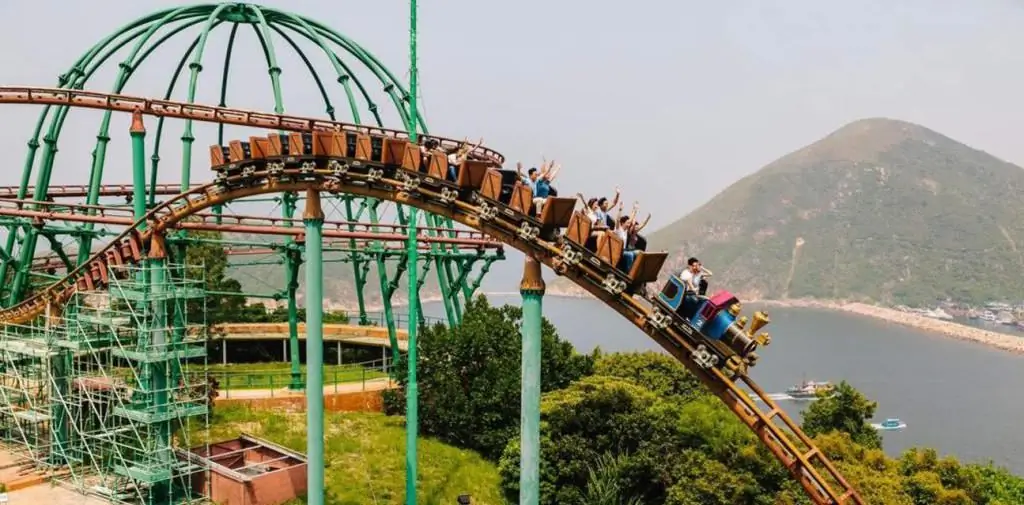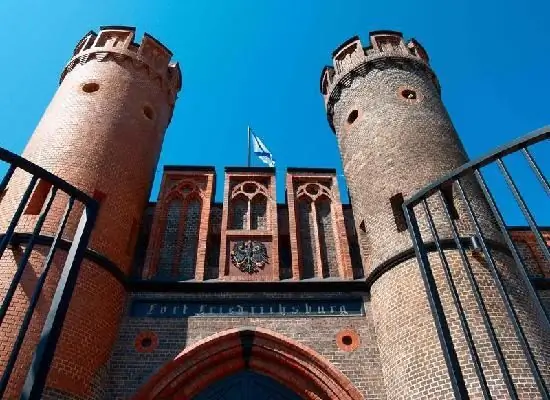- Author Harold Hamphrey [email protected].
- Public 2023-12-17 10:06.
- Last modified 2025-06-01 07:20.
Going to St. Petersburg, many want to get acquainted with the traditional sights of this city. Of course, there are a lot of cultural heritage monuments here, however, some of them deserve special attention. One of these objects is the Narva Gate. They are not as famous as many other sights of St. Petersburg, but nevertheless they are of particular interest from the point of view of the culture and history of the city and even the whole country. The article will talk about the history of this cultural site, how it looks, and some interesting facts about it.

Narva Gate in St. Petersburg: description and general information
So, we already know that this wonderful object is located in the center of St. Petersburg. The architectural building is made in the Empire style. The Narva Gates were built in 1827-1834. Their construction was carried out for several years. The main purpose of the creation of the object is to perpetuate the memory of the participants in the war of 1812.
many specialists. The result was a remarkable monument that has survived to this day. You can always see a lot of tourists here, since the Narva Gates in St. Petersburg are listed in many guidebooks. In addition, it is impossible not to pay attention to them being nearby. Due to their rather large size, they are perfectly visible in the middle of the rest of the urban landscape. For example, the height of the object reaches more than 30 meters, the width is 28 meters. The span of the gate is 8 meters wide. Its height is 15. Thus, you can make sure that their dimensions are really significant.

How did the cultural object come about?
Now it's worth talking about how this wonderful architectural monument was built. Naturally, many people (both tourists and local residents) are interested in such a grand cultural heritage site as the Narva Gates in St. Petersburg. The history of their creation is interesting and instructive.
Initially, they were built to meet the Russian military forces that were returning in 1814 from Europe. Then the gate was built of wood according to the project of the architect Quarenghi and decorated with some details. They were located on the Narva outpost. The building was erected very quickly - all the work was done in a month.
Decorative elements were a chariot drawn by horses. The arch was decorated with figures of Roman soldiers. However, in this design, the Narva Gate did not last long. After a while they came todecline. However, everyone understood their importance and meaning, so the decision was made to create a new object from other materials, as well as slightly change its location.

Transform Gate
Thus, we considered the question of how this cultural object appeared, for what purposes it was decided to build it. The new project, according to which it was decided to rebuild the Narva Gates, was created by another architect, Stasov. There was no fundamental difference between the two monuments, since the idea of the building itself has not changed.
After the project was approved, in 1827 the construction of a new gate began. The main difference from the old object was that the construction of the monument was built of brick, then sheathed with copper sheets. The sculptural details decorating the gates were also created from copper sheets. Now they looked like six horses and a figure of Glory. In addition, here you can see figures depicting ancient Russian knights.
It is interesting that many experts pay great attention to the monument. They argue that the gates have a lot of differences from other objects of this time. Among the features most often noted are the rigor and simplicity of the design, as well as the absence of too complex images used to create the sculptural group.

Restoration of the object
So, we got acquainted with the process of creating such a wonderfulmonument, like the Narva Gate in St. Petersburg. The story, however, does not end there. No doubt, for some time the gate delighted all visitors with its beautiful view. But a few years after its creation, copper began to deteriorate under the influence of the local climate. At the end of the 19th century, a decision was made to restore it. Already in 1870-1877, work began on restoring the appearance. They decided to replace the copper sheets with iron ones, but this only increased the corrosion processes. Since there were rooms inside the gate, it was decided to move part of the archive of the City Duma here.
In 1917, the monument was badly damaged: it was set on fire. Then the archive completely burned down, and the appearance and decorative elements decorating the gate deteriorated. In 1924, the monument was again decided to be repaired. However, the restoration did not have time to complete, because the war began.
Gate during the Great Patriotic War
At that time, the gate was again badly damaged, many holes appeared in them, some parts of the decor were completely destroyed. The city was constantly bombed and shelled.
Through these gates the troops left Leningrad for the front. Special anti-tank fortifications were also built here. Already at the end of the war, the troops returned back through the same gates. Of course, the monument would not have stood in such a bad condition for a long time, so after the war the object had to be restored several more times. In 1987, a museum dedicated to the war of 1812 was opened here. From time to time you can see various exhibitions here.

Where is the monument?
So, we got acquainted with the history of this wonderful cultural heritage site. Perhaps many will want to visit the Narva Gates in St. Petersburg. The address of the monument: Stachek Square, 1. Getting here is quite easy, since the gate is located right in the center of the city. The nearest metro station, from which it is most convenient to walk to the monument, is Narvskaya. It will be very interesting to visit the object for one more reason - the place where it is located also has a rich history, which is worth reading and learning more about. There are many cultural institutions nearby, which are worth paying attention to.

What's inside now?
So now we know where this unique monument is located. Of course, it is worth telling in more detail about what is inside the gate. As already mentioned, there are several rooms, and quite extensive ones. Now the gate is one of the branches of the Museum of Urban Sculpture. In the inner rooms is the Museum of Military Glory. It is open to the public.
To get into the premises, you need to climb two spiral staircases, which will be very interesting for all visitors. The museum began to operate a relatively long time ago, in 1978. Since then, many people have visited here: both tourists and local residents who are interested in the culture and history of the city. Thus, this is one of the most famous sights of the city. Narva Gate in St. Petersburg. Photos of the monument can be seen in many guidebooks and other travel materials.

Interesting facts about the Narva Gates
Because the object has a rich and rather long history, there are many interesting details associated with it. For example, when the gates were built in a wooden version and began to collapse, none other than the hero of the war of 1812, General M. A., stood up for them. Miloradovich. It was then that Emperor Nicholas I decided to reconstruct.
Also of interest is the fact that the object was originally located in a different place than it is now. During the construction of the new gate, already in stone, they were moved south from the previous location, to the bank of the river called Tarakanovka. Thus, we got acquainted with the wonderful Narva Gates, their history, location and other interesting details.






